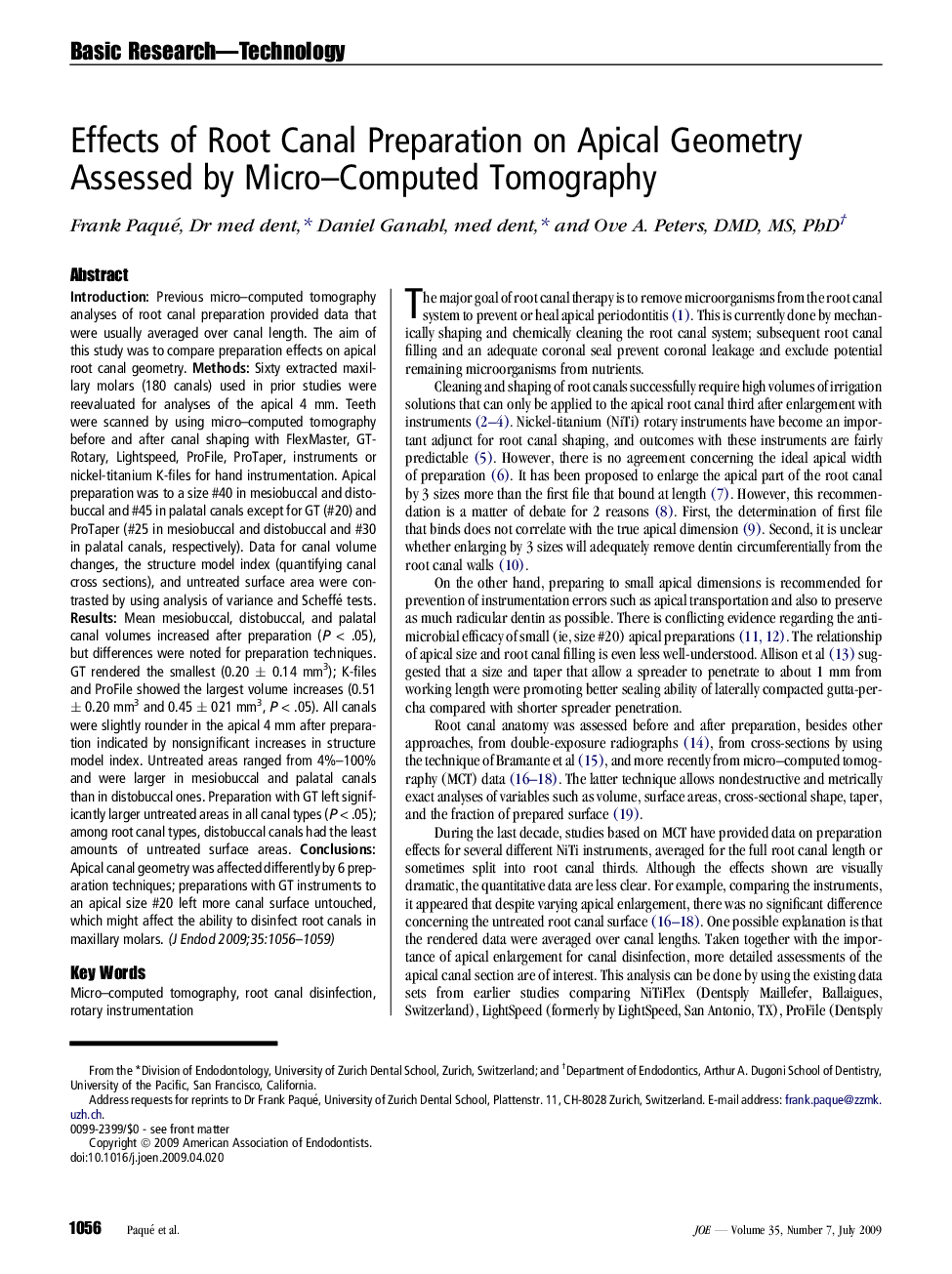| کد مقاله | کد نشریه | سال انتشار | مقاله انگلیسی | نسخه تمام متن |
|---|---|---|---|---|
| 3148526 | 1197404 | 2009 | 4 صفحه PDF | دانلود رایگان |

IntroductionPrevious micro–computed tomography analyses of root canal preparation provided data that were usually averaged over canal length. The aim of this study was to compare preparation effects on apical root canal geometry.MethodsSixty extracted maxillary molars (180 canals) used in prior studies were reevaluated for analyses of the apical 4 mm. Teeth were scanned by using micro–computed tomography before and after canal shaping with FlexMaster, GT-Rotary, Lightspeed, ProFile, ProTaper, instruments or nickel-titanium K-files for hand instrumentation. Apical preparation was to a size #40 in mesiobuccal and distobuccal and #45 in palatal canals except for GT (#20) and ProTaper (#25 in mesiobuccal and distobuccal and #30 in palatal canals, respectively). Data for canal volume changes, the structure model index (quantifying canal cross sections), and untreated surface area were contrasted by using analysis of variance and Scheffé tests.ResultsMean mesiobuccal, distobuccal, and palatal canal volumes increased after preparation (P < .05), but differences were noted for preparation techniques. GT rendered the smallest (0.20 ± 0.14 mm3); K-files and ProFile showed the largest volume increases (0.51 ± 0.20 mm3 and 0.45 ± 021 mm3, P < .05). All canals were slightly rounder in the apical 4 mm after preparation indicated by nonsignificant increases in structure model index. Untreated areas ranged from 4%–100% and were larger in mesiobuccal and palatal canals than in distobuccal ones. Preparation with GT left significantly larger untreated areas in all canal types (P < .05); among root canal types, distobuccal canals had the least amounts of untreated surface areas.ConclusionsApical canal geometry was affected differently by 6 preparation techniques; preparations with GT instruments to an apical size #20 left more canal surface untouched, which might affect the ability to disinfect root canals in maxillary molars.
Journal: Journal of Endodontics - Volume 35, Issue 7, July 2009, Pages 1056–1059